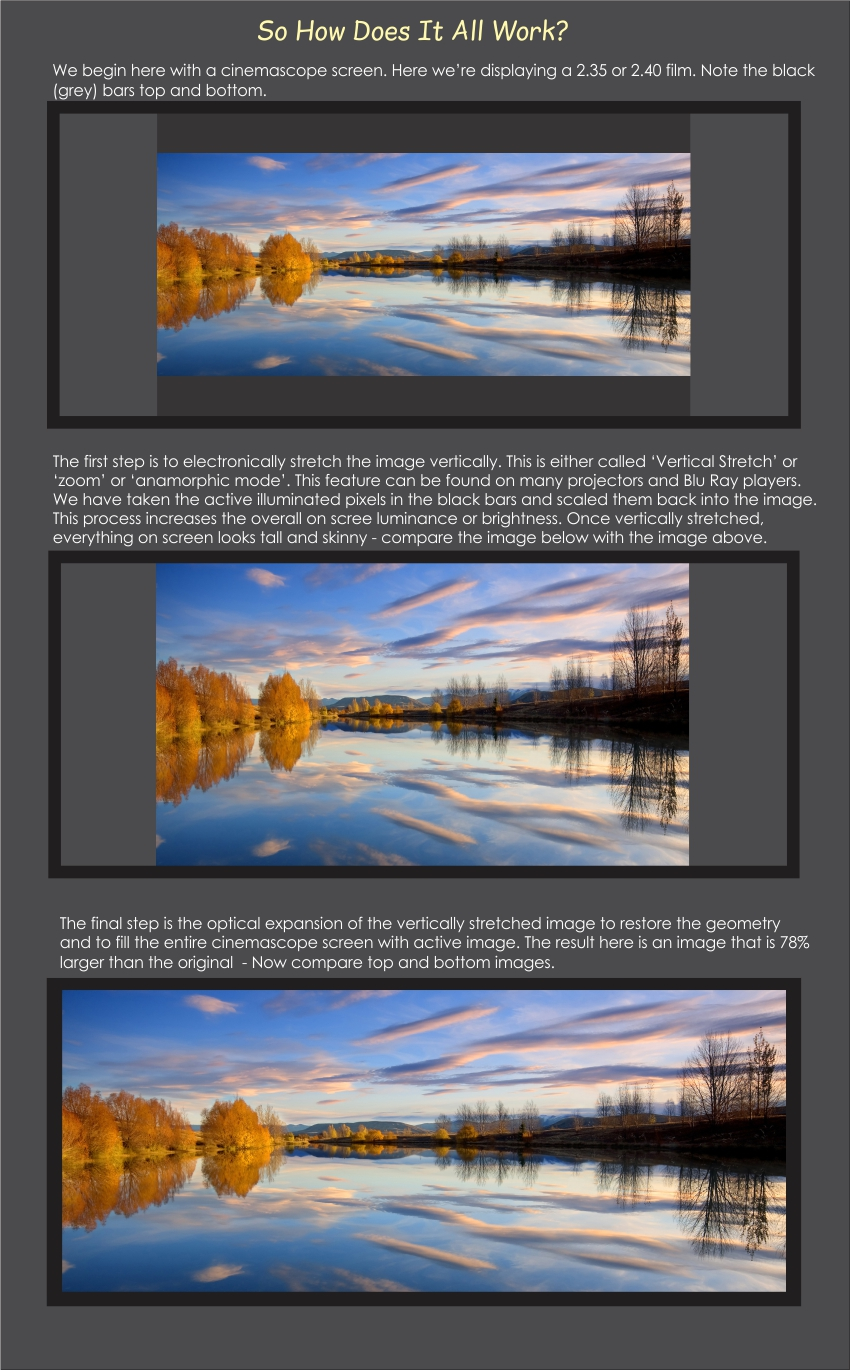|
All cinemascope movies are either in ratios of 2.35:1, 2.39:1 or 2.40:1. In fact they’re all the same width,
they have to be in order to be viewed on fixed panel devices such as TV and Projectors. They simply add
different height black bars to keep the geometry correct. You will find most are either 1920x800 (2.40:1), 1920x810 (2.37037:1) or 1920x816 (2.3529:1). The math is simply 1920/800=2.4 , 1920/810=2.37, 1920/816=2.35 - all with rounding.
240:1 films have 280 lines of black bars (140 top and 140 bottom or 537,600 pixels wasted in black bars) and
237:1 films have 270 lines of black bars (135 top and 135 bottom or 518,400 pixels wasted in black bars) and
235:1 films have 264 lines of black bars (132 top and 132 bottom or 506,880 pixels wasted in black bars)
Those pixels are wasted in black bars (grey to be exact) and can be used to both brighten up the cinemascope image and add to the overall pixel count on screen, making the image denser. ie less chance of seeing the dreaded screen door effect as we now have the entire 1080x1920 pixel count in the active image.
We’ve tested lenses from all over the world and have also been involved in the design and manufacture of different models over the years. After many hours of testing and tweaking, there are but one brand we proudly standby - The Xeit Crystalmorphic 5E (more about this beauty in the products page).
Projectors are anomaly free these days so it’s important if you’re going to use a lens, to use a lens that’s as transparent as possible. The CrystalMorphic lens is the most lossless lens ever created for Home Theatre.
|
 |
|
Copyright 2002-2014 Anamorphiclens.com.au is a website of Oz Theatre Screens.
Phone 07 5546 1960 or 0402 424 177 or email sales@anamorphiclens.com.au |
|